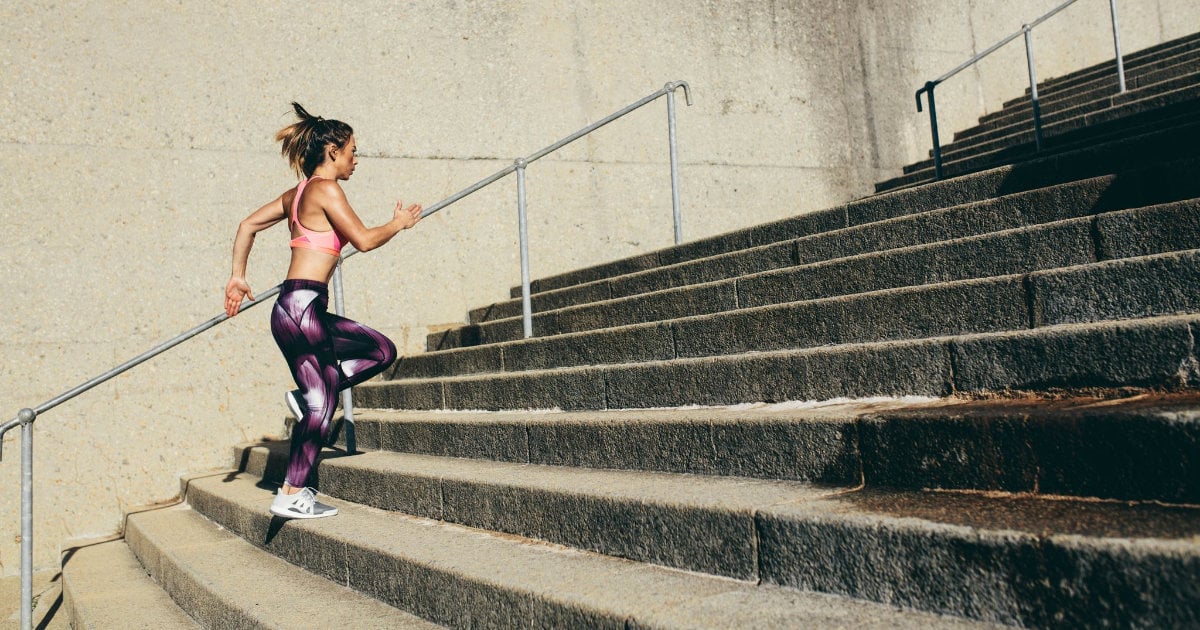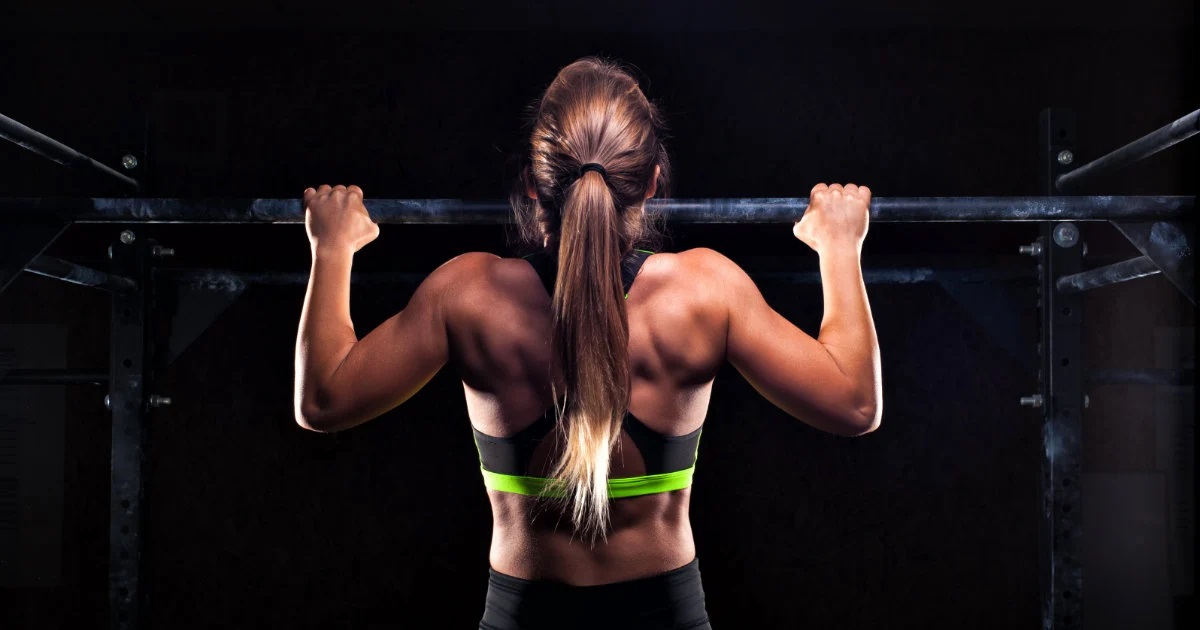Workout Summary
- Main GoalBuild Muscle
- Workout TypeFull Body
- Training LevelBeginner
- Program Duration8 weeks
- Days Per Week7
- Time Per Workout30-60 minutes
- Equipment RequiredBarbell, Bodyweight, Dumbbells, Exercise Ball, Machines
- Target Gender Male & Female
Workout Description
This is a 7-day routine, for general fitness, which is suitable for any female that has never lifted a weight before; it is in fact the routine that I began with, having never lifted a weight. It is also very practical for those not wishing to go to a gym, because all the exercises can be performed at home, with a few pieces of equipment; all of the equipment will be based around your own level of strength.
Workout Schedule
- Day 1: Weight Routine A
- Day 2: Cardio 45 minutes
- Day 3: Weight Routine B
- Day 4: Cardio 45 minutes
- Day 5: Weight Routine C
- Day 6: Cardio 45 minutes
- Day 7: A 60 minute walk/cycle ride (at a good pace, based on your current fitness level)
The routine has been set out as day1 through to day 7, because it is important to realise that you can start the plan on the best day to suit your own schedule; for some, Saturday is the best day for day 7, for others it will be Sunday or maybe even Thursday. Because day 7 is the only session that you need to do outdoors, even though you can also do this indoors as well, try to place day 7 at the most convenient time in your weekly schedule for you to be outdoors; so, if you place day 7 on a Wednesday, then day 1 will be a Thursday because it is the day that immediately follows it and because this is a 7-day routine.
The reason it is a 7-day routine is because it is not intense as such, and familiarity of doing exercise on a daily basis is a good idea, even though Day 7 is a gentle session and can be considered as just a relaxing day but with some exercise scheduled in to it. The plan is flexible, in that if you should miss a day, just pass over it and continue the normal cycle as you have it planned; this is not a problem due to the fact that each weight session covers the entire body, so if you end up missing a session, you have no need to overly concern yourself or berate yourself.
It is recommended that you plan complete breaks of about a week in duration; plan these to coincide with celebrations, holidays and similar days, but try not to take more than 5 weeks per year in total. The way to remain fit is to adhere to a program and if too many rest weeks occur this can prove detrimental; but 5 are fine, which works out to taking a break every 8-10 weeks. You could cycle the routine for 8 weeks and then take the rest week, or you could cycle it for 12 weeks and then break for one week for a birthday and the a week or two later for another important date in your life; the choice is yours. This is also an integral part, since you have to be able to learn to make decisions early on because this will put you in control of your fitness and that way you will stick with the program.
Requirements:
- An adjustable set of dumbbells (or a set of 2.5kg/3kg/4kg/5kg weights; base the selection on your strength levels)
- An exercise step (optional*) [can also double up for use in dumbbell bench press etc]
- An exercise bike (optional*)
- A stability ball [use this for exercises that require a flat bench, dumbbell bench press etc]
*Basically, one piece of equipment for aerobic activity, so either of these two will work, as will an ordinary bike if you have the opportunity to exercise outdoors.
Notes: Where it says 3 sets and 20 reps; all this means is do 20 reps, short pause, do another 20 reps, short pause, do the last 20 reps. If you are unable to complete the reps required, this is not a problem; there are several ways around this: choose a lighter weight; do as many as you can in that session and build up over time to get to the number of reps stated; take very brief pauses of 5 seconds and continue the reps until you have done as many as you can or reached the number required.
Lying triceps extensions, pullovers and other suitable exercises can be done with either one weight held between two hands or with one weight in each hand; this is a way in which to vary the weight load, in a slightly different manner.
You will need to use lighter weights for some muscle groups, not the same weight for all muscle groups; the stronger the muscle the higher the weight load a person should use.
Workout A
| Exercise | Sets | Reps |
|---|---|---|
| Dumbbell Squat | 3 | 20 |
| Dumbbell Bench Press | 3 | 20 |
| Dumbbell Pullover | 3 | 20 |
| Dumbbell Lateral Raise | 3 | 15 |
| Dumbbell Hammer Curl | 3 | 20 |
| Two Arm Dumbbell Overhead Tricep Extension | 3 | 20 |
| Standing Calf Raise | 2 | 30 |
| Reverse Hyperextension | 3 | 20 |
| Ab Crunches | 3 | 20 |
Workout B
| Exercise | Sets | Reps |
|---|---|---|
| Flat Bench Dumbbell Flye | 3 | 20 |
| One Arm Dumbbell Row | 3 | 20 |
| Dumbbell Shoulder Press | 3 | 20 |
| Dumbbell Bicep Curl | 3 | 20 |
| Tricep Kickback | 3 | 15 |
| Lying Adduction (dumbbells/bands*) | 3 | 20 |
| Lying Abduction (dumbbells/bands*) | 3 | 20 |
| Seated Calf Raise** | 2 | 30 |
| Reverse/Lower Abs Crunch | 3 | 20 |
Notes:
*If bands are available for performing the leg abduction and adduction exercises, then these two exercises can be done whilst standing upright and attaching the band around a sturdy object such as a stair railing. Dumbbells can be balanced across the trainers that are being worn, although this does require some balancing skills when lowering and raising the leg, but lightweights should be started with; a 5kg weight is a challenge during leg adduction, so anything below that is not considered bad in any way. Ankle weights are preferable, but not necessary.
**These have been placed in for those wishing to do some seated calf raises, if they can find weights that will challenge the calf; however, doing standing calf raises in each of the 3 sessions is fine, and is how the routine was performed initially.
Workout C
| Exercise | Sets | Reps |
|---|---|---|
| Sissy Squat | 3 | 20 |
| Lying Leg Curl* | 1 | 60 |
| Standing Calf Raise | 2 | 30 |
| Chest Dip** | 2 | 15 |
| Push Up** | 2 | 15 |
| Dumbbell Pullover | 3 | 20 |
| Dumbbell Reverse Flye | 3 | 15 |
| Bicep Concentration Curl | 3 | 20 |
| Lying Two Arm Dumbbell Tricep Extension | 3 | 20 |
| Obliques Curl | 3 | 20 |
Notes:
*Lying leg curl is done with a weight held between the feet; this is one set of 60 reps, because a low weight will not really tax the legs, however, done for 60 reps straight, you will feel it. Start low with the weight at 3kg, when it gets easy enough to do the 60 reps with no problems, move up to 4kg, and then to 5kg. If you cannot complete the 60 reps in one set, then pause a short time to get your breath and start from where you left off until you have completed as many as you feel you can, or have reached the goal of 60 reps.
**Chest dips can be done wherever you can find a suitable place, the corner of two kitchen units, for example. Half push-ups can be done until strength increases enough to complete full push-ups. With these 2 exercises, you may also omit one and just do 3 sets of 20 reps of the other one; so should you choose not to do chest dips, just do 3 sets of 20 reps of the push-ups.
Cardio
If using an aerobic step, set it at a height which is comfortable for you. Start on the lowest setting if you are completely new to exercise; if you are slightly fitter, start on the medium height setting; if you feel you are able to handle it, use the step set at its highest level.
There is no need for fancy stepping, this will get you injured, and a twisted ankle will halt your gains. So, the plan is:
(Always count the lead leg)
- Step up with the right leg
- Step up with the left leg
- Step down with the right leg
- Step down with the left leg
- Tap ground with left foot (this is the changeover after reaching 10 with the right leg as the leading leg)
- Step up with left leg
- Step up with right leg
- Step down with left leg
- Step down with right leg
- Tap ground with right foot (this is the changeover after reaching 10 with the left leg as the leading leg)
Do as much as you are able, on the very first occasion, and then once you have a base starting point add 5 minutes per week to the session until you reach 45-minutes. Increase the tempo up and down as you wish, stepping along to your favorite beat/music.
Follow the exact same plan of building up your endurance/fitness levels, if using a bike/exercise bike. This is the same process you will use for gaining strength where the weight sessions are concerned; do as much as you can and gradually build it up week by week.
One of the most important things to do is to keep a journal, in this way you can see the improvements yourself. Above all, remember to have fun! Once you feel that you have outgrown this plan, move onto another routine; you will know when that time is.



